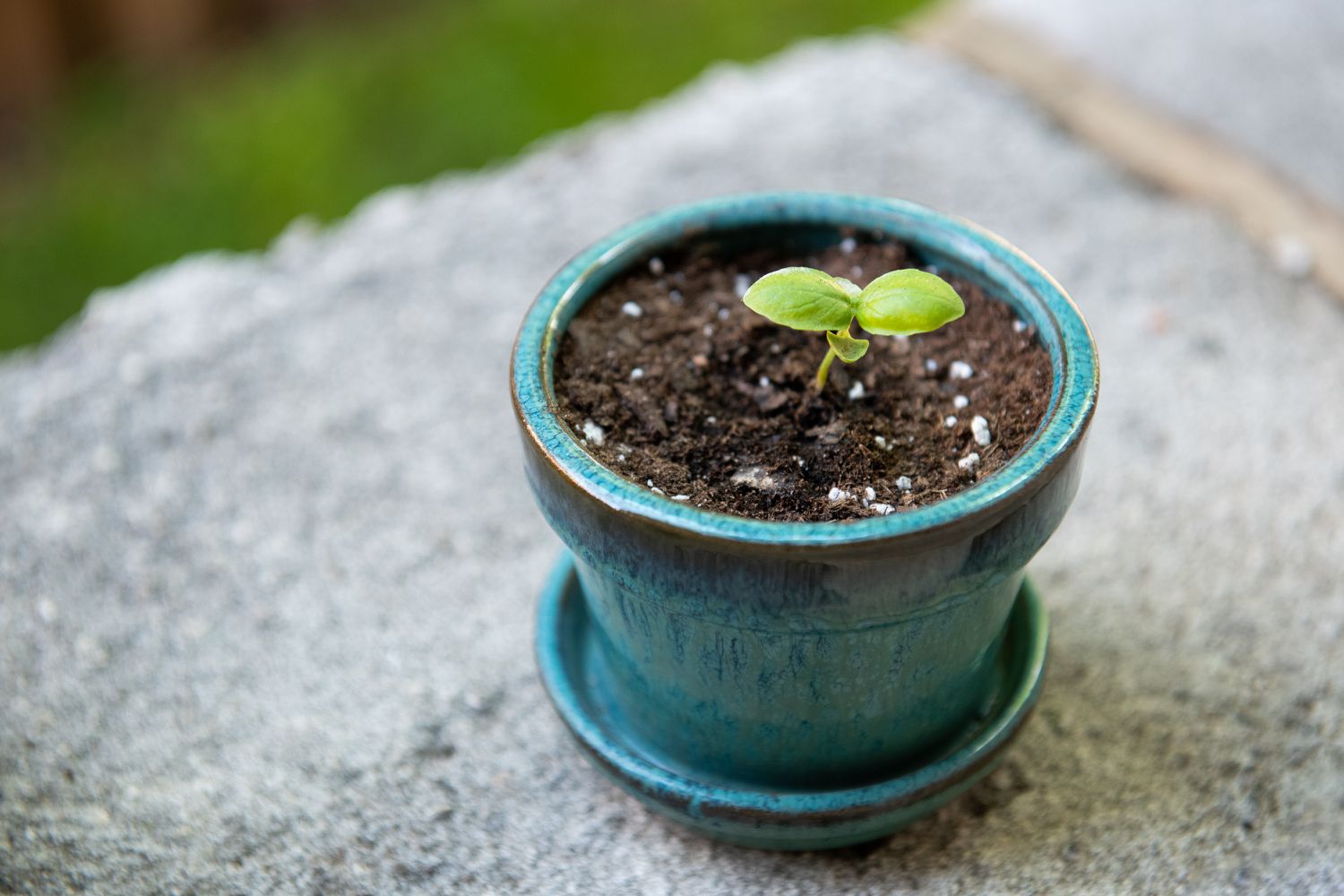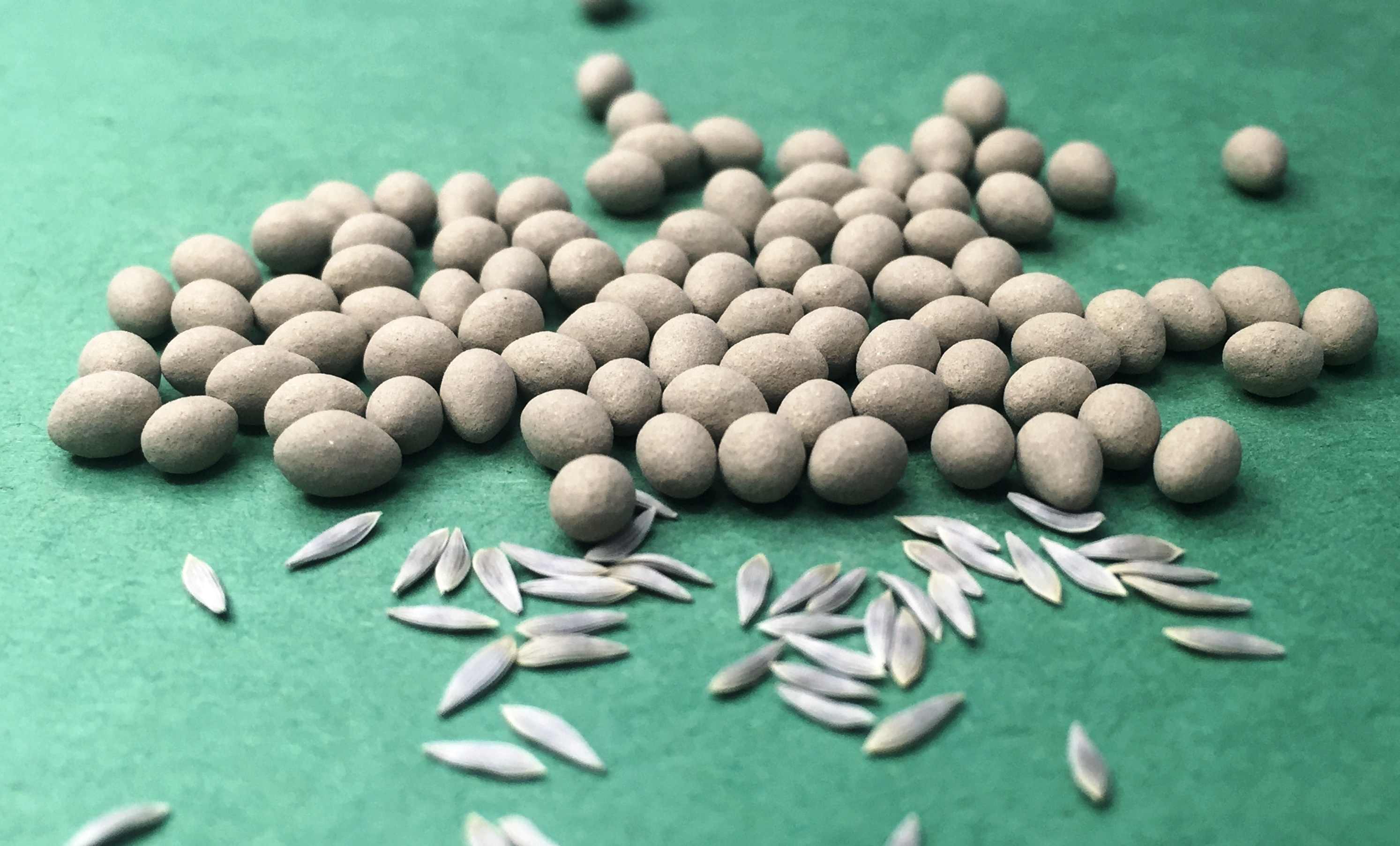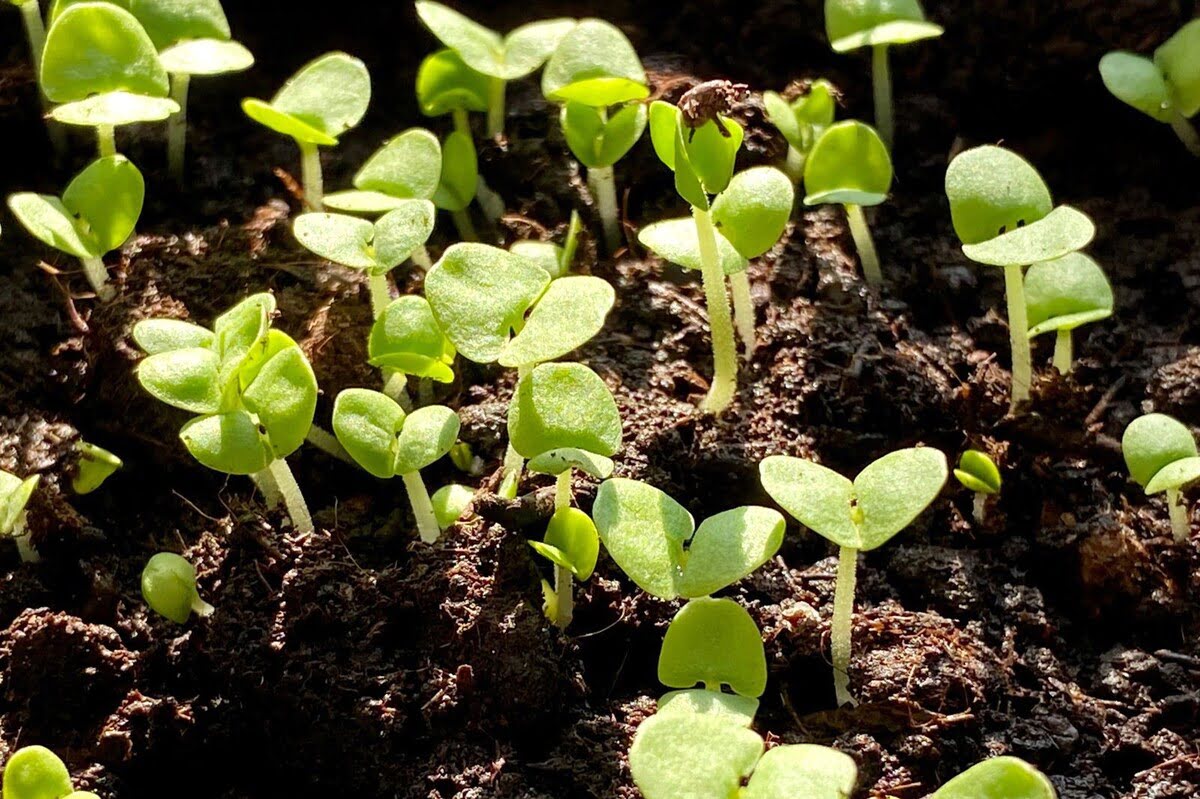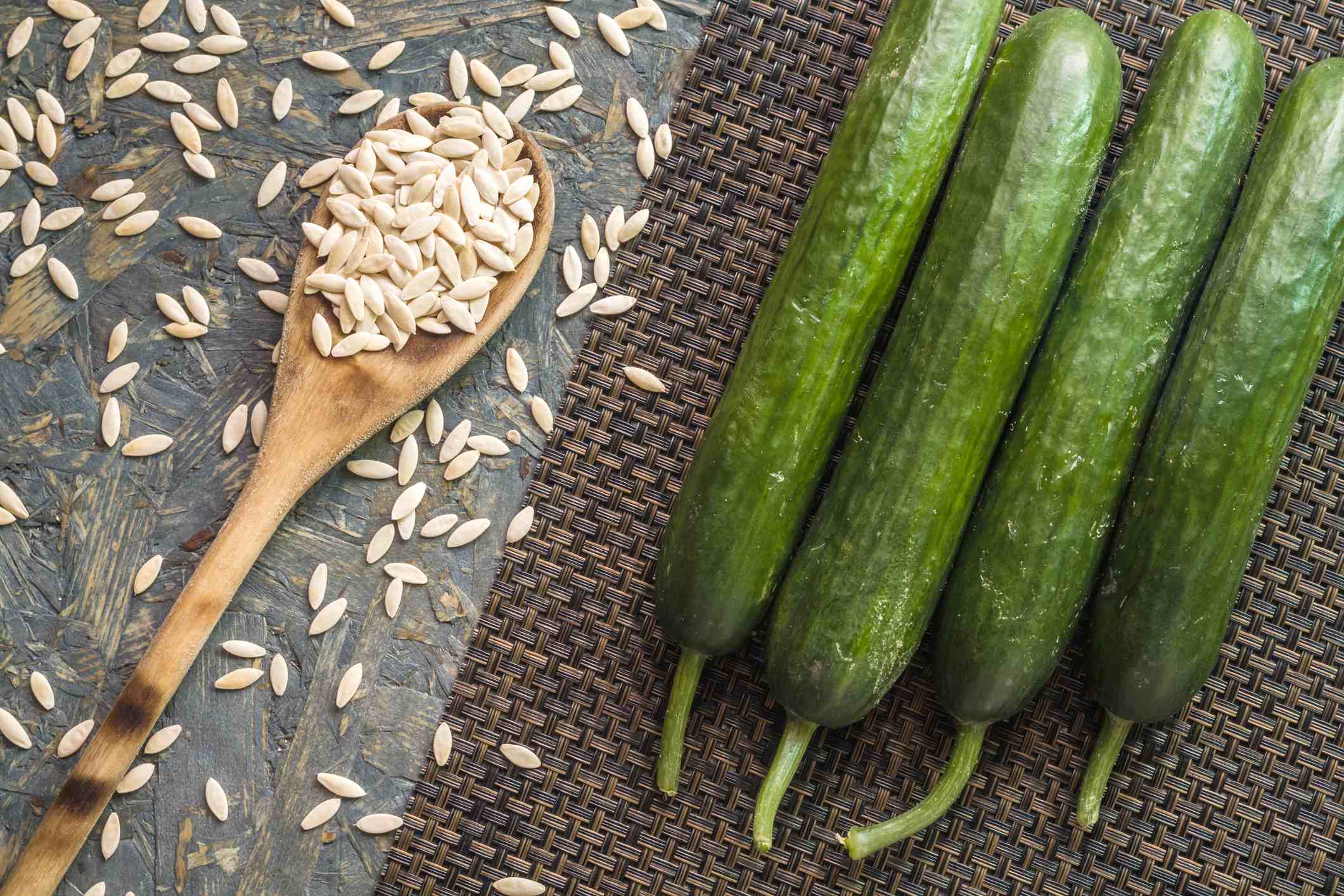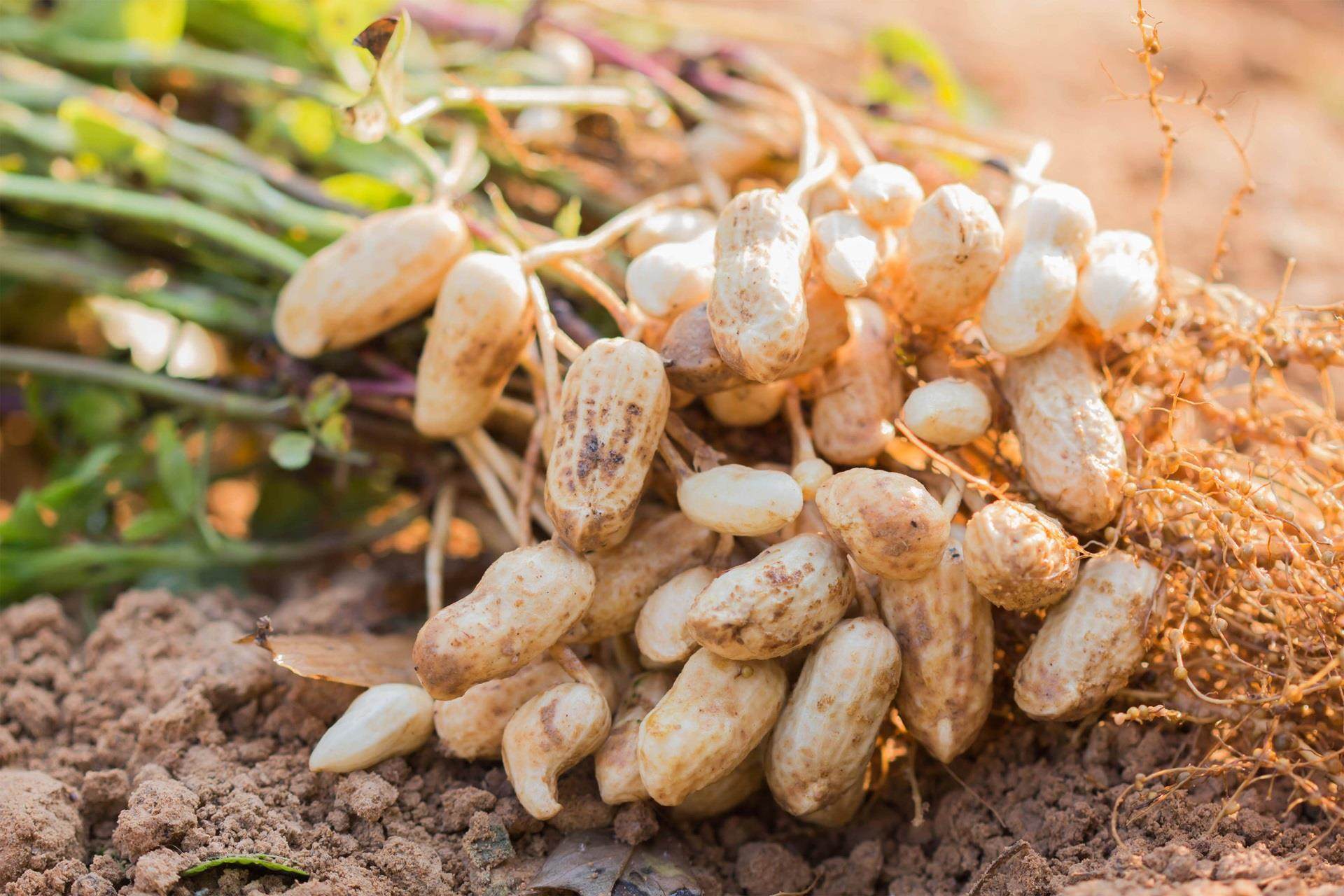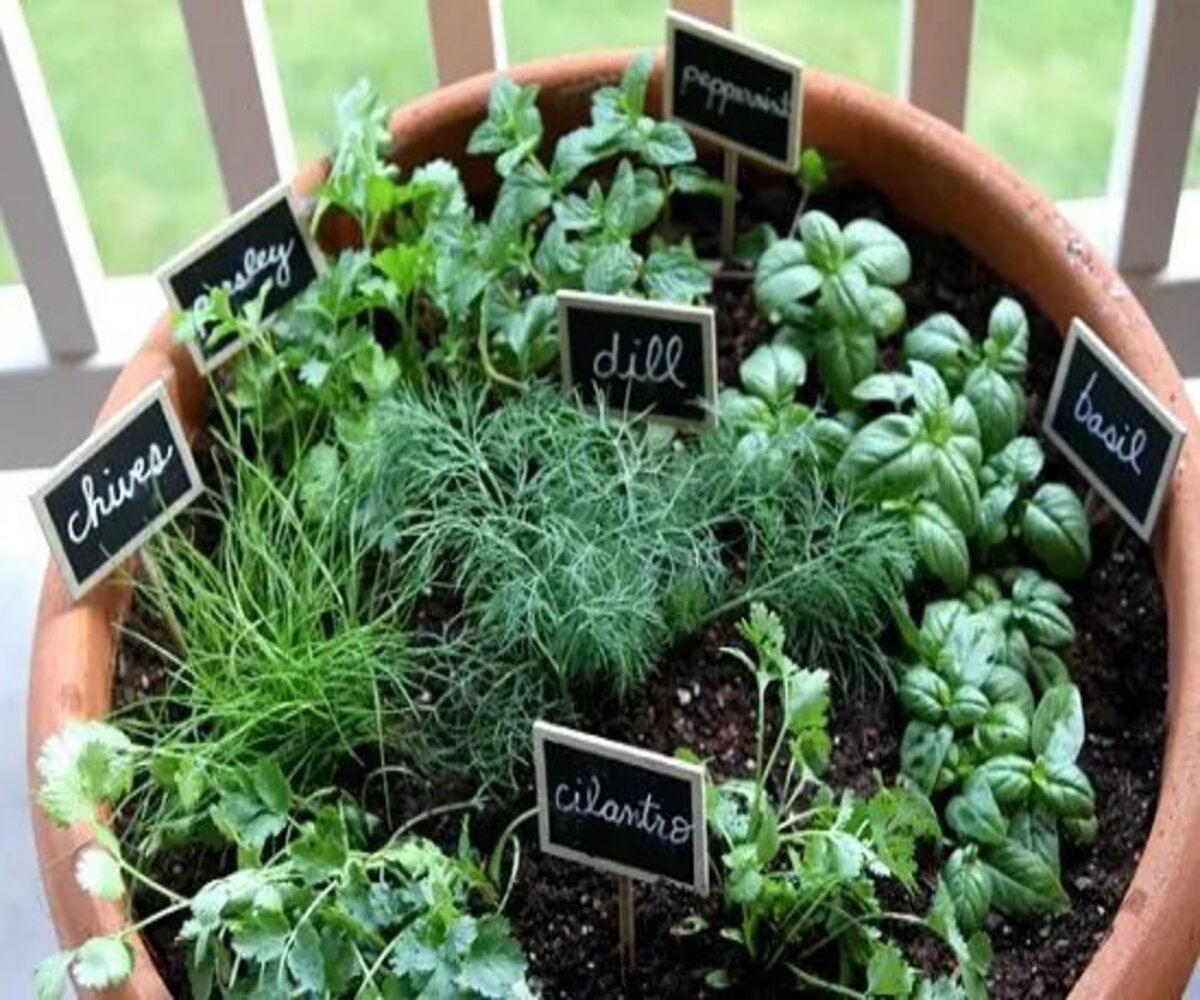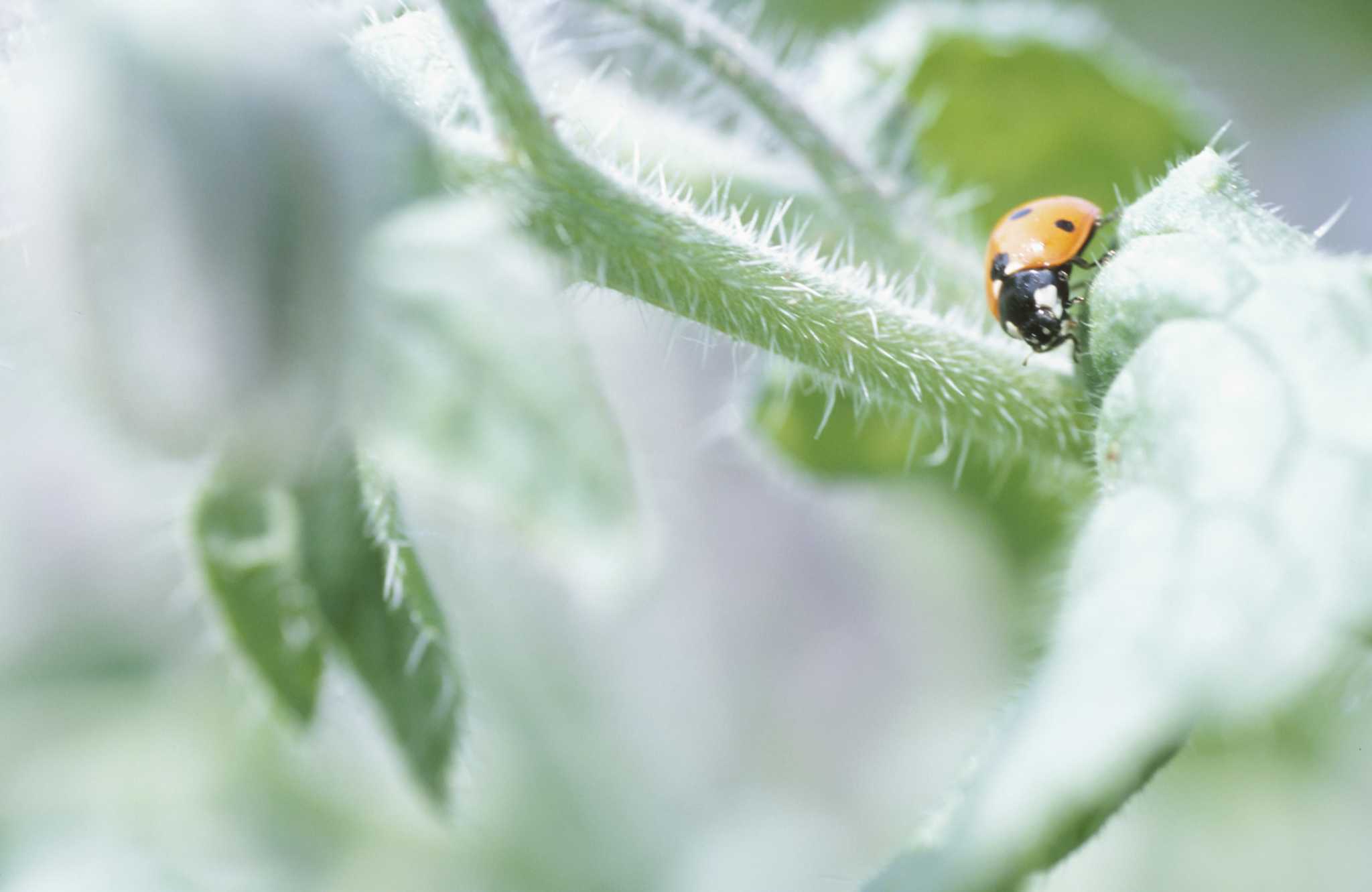Home>Types of Gardening>Ornamental Gardening>How To Get Basil Seeds
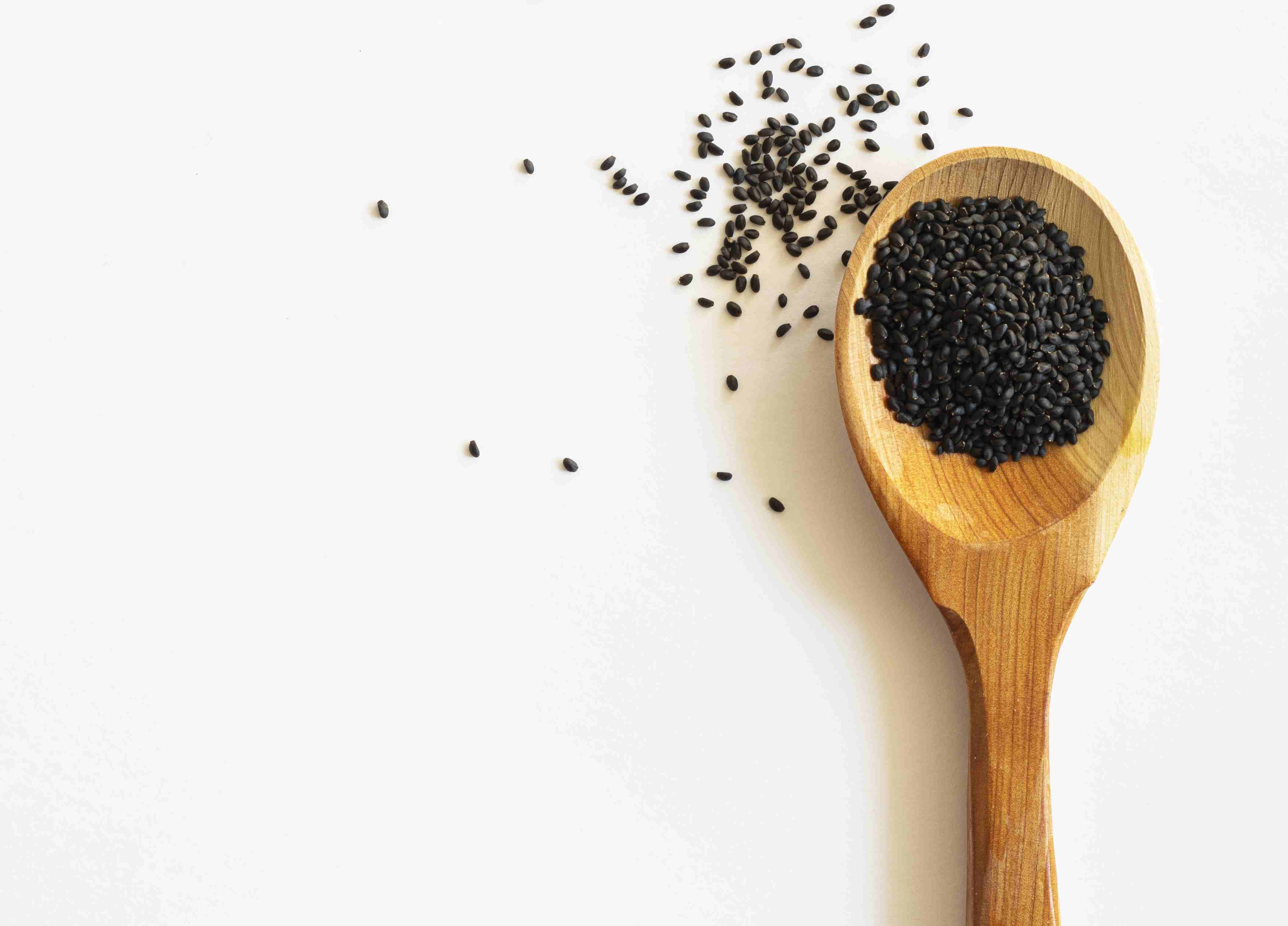

Ornamental Gardening
How To Get Basil Seeds
Modified: January 22, 2024
Learn how to get basil seeds for your ornamental gardening projects. Discover expert tips and techniques to ensure successful germination and plant growth.
(Many of the links in this article redirect to a specific reviewed product. Your purchase of these products through affiliate links helps to generate commission for Chicagolandgardening.com, at no extra cost. Learn more)
Table of Contents
Introduction
Welcome to the fascinating world of ornamental gardening! If you are someone who appreciates the beauty and elegance that can be created through the art of gardening, then you are in the right place. In this comprehensive guide, we will delve into the realm of ornamental gardening and explore the various techniques, tips, and tricks to create stunning and visually appealing gardens.
Ornamental gardening focuses on the cultivation and arrangement of plants and flowers for their aesthetic appeal. Whether you have a small balcony, a sprawling backyard, or anything in between, you can transform your space into a captivating oasis. The possibilities are endless when it comes to designing and creating your own ornamental garden.
Not only are ornamental gardens visually stunning, but they also provide a myriad of benefits. They can be a haven for beneficial insects and wildlife, improve air quality, reduce stress, and create a sense of tranquility. Plus, gardening is a wonderful way to get outside, connect with nature, and reap the physical and mental health benefits associated with it.
Throughout this guide, we will explore topics such as selecting the right plants, designing your garden, soil preparation, planting techniques, proper maintenance, and troubleshooting common issues. Whether you are a novice gardener or have some experience under your belt, there will be something for everyone.
We understand that starting an ornamental garden can feel overwhelming, especially with the vast array of plants, colors, and design options available. But fear not, as we will break down each aspect step by step, providing you with the knowledge and confidence to create a stunning garden that reflects your style and personality.
So, grab your gardening tools, put on your gloves, and let’s embark on this journey together. Get ready to unleash your creativity, cultivate beauty, and enjoy the rewards of a thriving ornamental garden.
Benefits of Basil Seeds
Basil, a fragrant and versatile herb, is well-known for its culinary uses, but have you ever considered the benefits of basil seeds? These tiny black seeds, also known as sabja seeds or tukmaria, possess a wealth of health benefits that are worth exploring. Here are some of the key benefits of incorporating basil seeds into your diet:
- Nutritional Powerhouse: Basil seeds are packed with essential nutrients, including vitamins A, C, and K, as well as minerals like calcium, magnesium, and iron. Consuming basil seeds can help boost your overall nutrient intake and support your overall well-being.
- Improved Digestion: Basil seeds have long been used as a natural remedy for digestive issues. They contain soluble fiber that can help regulate bowel movements, prevent constipation, and promote a healthy digestive system. Soaking the seeds in water forms a gel-like substance that aids in digestion.
- Hydration Support: The gel-like texture formed by soaked basil seeds can help keep you hydrated. When consumed, the seeds absorb water, increasing their volume and providing a cooling effect. This makes basil seeds a great choice to beat the summer heat and replenish fluids in the body.
- Weight Management: Basil seeds are low in calories but high in fiber content. This can help you feel fuller for longer, reducing cravings and aiding in weight management efforts. The fiber in basil seeds also slows down the absorption of carbohydrates, preventing sudden spikes in blood sugar levels.
- Heart Health: The presence of omega-3 fatty acids in basil seeds contributes to heart health. These healthy fats can help reduce inflammation, lower cholesterol levels, and support cardiovascular function, reducing the risk of heart disease.
- Antioxidant Properties: Basil seeds, like the leaves of the basil plant, contain antioxidants that fight against free radicals and protect the body from oxidative stress. These antioxidants can help prevent cell damage and may contribute to a reduced risk of chronic diseases.
With all these impressive benefits, it’s no wonder that basil seeds have gained popularity in recent years. Incorporating them into your diet can be as simple as adding them to smoothies, yogurt, salads, or using them as a topping for desserts and puddings. They add a subtle crunch and a hint of nutty flavor.
However, it’s important to note that basil seeds should be consumed in moderation and may not be suitable for everyone. If you have any underlying health conditions or are on medication, it’s best to consult with a healthcare professional before incorporating them into your diet.
Incorporating basil seeds into your routine can be a flavorful and nutritious addition. So, why not give them a try and reap the benefits they have to offer?
Where to Buy Basil Seeds
If you’re on the hunt for basil seeds to start growing your own basil plants, you’ll be pleased to know that they are widely available. Here are some of the best places to buy basil seeds:
- Local Nurseries and Garden Centers: Visit your local nurseries or garden centers, as they often carry a variety of herb seeds, including basil. This allows you to see the seeds in person and choose from different varieties. Additionally, the staff at these establishments can provide valuable advice and guidance on growing basil from seeds.
- Online Seed Retailers: The internet has made it incredibly convenient to purchase seeds from the comfort of your own home. Numerous online seed retailers specialize in a wide range of seeds, including basil seeds. Research reputable retailers, read reviews, and compare prices to find the best options that suit your needs.
- Farmers’ Markets: Farmers’ markets are not only great places to find fresh produce, but they are also often home to local growers who sell seeds and seedlings. This offers an opportunity to support local farmers, while also securing high-quality basil seeds for your garden. Chatting with the sellers can provide insights into specific basil varieties and growing tips.
- Seed Swaps and Exchanges: Check if there are any gardening communities, seed swaps, or exchanges in your area. These events bring together gardening enthusiasts who share and exchange seeds, enabling you to acquire unique and heirloom basil seed varieties. It’s also a fantastic way to connect with like-minded individuals and learn from their experiences.
- Home and Garden Stores: Stores that specialize in home and garden supplies often have a selection of seeds available, including basil seeds. These stores cater to individuals looking to spruce up their indoor or outdoor spaces and typically have a variety of gardening products to choose from.
When purchasing basil seeds, it’s important to consider factors such as the seed quality, variety, and any specific requirements for successful germination and growth. Look for reputable sources and opt for organic or non-GMO seeds whenever possible.
Remember, starting with high-quality seeds is the foundation for a successful gardening journey. So, explore these various avenues, compare options, and select the best basil seeds to embark on your ornamental gardening adventure.
Growing Basil From Seeds
Growing basil from seeds is an exciting and rewarding experience. Whether you’re a beginner gardener or have some experience under your belt, these simple steps will guide you in successfully growing basil from seeds:
- Choose the Right Time: Basil is a warm-season herb, so it’s best to start sowing the seeds after the last frost date in your region. Depending on your location, this is typically in the spring when the soil temperature has reached around 60°F (15°C) or higher. This will provide optimal conditions for seed germination and growth.
- Select the Variety: There are numerous basil varieties available, each with its own unique flavors and characteristics. Choose a variety that suits your taste preferences and growing conditions. Popular varieties include Sweet Basil, Genovese Basil, Lemon Basil, and Thai Basil.
- Prepare the Soil: Basil thrives in well-drained soil with plenty of organic matter. Prepare the soil by adding compost or well-rotted manure to improve fertility and drainage. Ensure the soil is loose and not compacted to promote root development.
- Sow the Seeds: Gently sprinkle the basil seeds on the soil surface, ensuring they are evenly spaced. Lightly press them into the soil but avoid burying them too deep, as basil seeds require light to germinate. Cover them with a thin layer of soil or vermiculite, approximately 1/4 inch deep.
- Provide Optimal Growing Conditions: Basil plants thrive in full sun, so choose a location that receives at least 6-8 hours of direct sunlight each day. Water the soil consistently to keep it moist but not waterlogged. Avoid over-watering, as it can lead to root rot. Basil also prefers warm temperatures, ideally between 70-85°F (21-29°C).
- Thin and Transplant: Once the seedlings have developed their first true leaves and are a few inches tall, thin them out, leaving the strongest ones spaced 6-12 inches apart, depending on the variety. If you’re growing basil in containers, transplant the seedlings to larger pots, ensuring they have enough space to grow and thrive.
- Provide Regular Care: Keep a close eye on your basil plants and make sure to provide regular care. Water them consistently, but avoid over-watering. Monitor for pests like aphids or caterpillars and take appropriate action if necessary. Pinch back the tips regularly to encourage bushier and fuller growth.
- Harvest Wisely: As your basil plants grow, you can begin harvesting the leaves for culinary use. Harvest in the morning when the essential oils are at their peak. Pinch off the individual leaves or cut the stems just above a leaf node. Regular harvesting promotes continued growth and bushiness.
Remember, growing basil from seeds requires some patience and care. But with the right conditions and proper maintenance, you’ll soon be rewarded with fresh and fragrant basil leaves to enhance your culinary creations.
Harvesting Basil Seeds
Harvesting basil seeds is an essential step if you want to save seeds for future planting or use them in other culinary and medicinal applications. Follow these steps to harvest basil seeds and ensure a successful seed-saving process:
- Allow the Basil Plant to Flower: Basil plants will eventually grow flowers, typically in the summer months. Allow the flowers to fully bloom and develop seeds. Depending on the variety, the flowers may be white, pink, or purple, adding a splash of color to your garden.
- Observe Seed Development: After the flowers have bloomed, tiny seed pods will form at the base of the flowers. These pods will gradually enlarge and turn brown as the seeds mature. Keep a close eye on the seed pods to determine the optimal time for harvesting.
- Monitor Seed Maturity: The seed pods will eventually turn brown and start to dry out. This is an indication that the seeds inside are fully mature. Gently touch the pods to ensure they are dry and brittle. Avoid harvesting the seeds too early, as they may not be fully developed.
- Collect the Seed Heads: Once the seed pods are fully dried and the seeds are mature, it’s time to harvest. Carefully cut the seed heads from the basil plant, using clean and sharp scissors or garden shears. Place the cut seed heads in a container or paper bag to catch any loose seeds.
- Separate the Seeds: To separate the seeds from the seed heads, hold the seed heads over a clean bowl or tray. Gently rub the seed heads between your fingers or palms to release the seeds. The tiny black seeds will fall out, while the remaining plant material can be discarded.
- Remove Debris: After harvesting, take a moment to remove any remaining debris or chaff from the seeds. This can be done by gently blowing on them or using a fine mesh strainer to separate the seeds from unwanted plant matter.
- Store the Seeds: To store the basil seeds, transfer them to a clean, airtight container such as a glass jar or a seed packet. Make sure the container is labeled with the date and the variety of basil seeds. Store the container in a cool, dry place away from direct sunlight.
By following these steps, you can harvest basil seeds and preserve them for future planting or use them in various culinary and medicinal preparations. Remember that basil plants may cross-pollinate, so if you want to maintain the characteristics of a particular variety, be sure to separate different basil varieties in the garden.
Harvesting and saving basil seeds not only allows you to continue enjoying homegrown basil but also allows you to explore different basil varieties and contribute to seed diversity.
Storing Basil Seeds
Properly storing basil seeds is crucial to maintain their viability and ensure successful germination when you’re ready to plant them. Follow these guidelines to store your basil seeds effectively:
- Ensure Dryness: Before storing basil seeds, ensure that they are completely dry. Any moisture can lead to mold or fungi growth, which may damage the seeds. Allow the seeds to air dry for a few days after harvesting to ensure they are moisture-free.
- Use Suitable Containers: Transfer the dry basil seeds to a suitable container for storage. Opt for clean, airtight containers such as glass jars, resealable bags, or seed packets. Make sure the containers are labeled with the date and the variety of basil seeds.
- Choose Cool, Dark, and Dry Conditions: Basil seeds require cool, dark, and dry conditions to maintain their viability. Store the seed containers in a cool and dry place, away from direct sunlight and moisture. A pantry, basement, or refrigerated space can be suitable storage locations.
- Control Temperature and Humidity: Fluctuations in temperature and humidity can negatively impact seed viability. Aim for a consistent temperature between 40°F (4°C) to 50°F (10°C) and a humidity level below 50%. Avoid storing seeds in areas prone to extreme temperature changes or high humidity.
- Prevent Pests: Basil seeds can be susceptible to insect infestations if not stored properly. Before storing, ensure that the containers are clean and free from any pests. You can also consider including a moisture absorber or a small packet of silica gel to reduce moisture and deter pests.
- Regularly Check for Viability: Over time, seed viability can decrease. To ensure you’re working with viable seeds, it’s a good practice to conduct a germination test. Take a small sample of the stored seeds and place them on a damp paper towel. If a significant portion fails to germinate, it may be time to refresh your seed stock.
By following these storage practices, you can preserve the quality and viability of your basil seeds for an extended period. This allows you to use them for multiple growing seasons or share them with fellow gardeners.
Remember, the longevity of seeds can vary depending on the basil variety and storage conditions. Generally, basil seeds can remain viable for one to five years when stored properly. However, for optimal germination rates, it’s best to use the seeds within the first three years.
With proper storage, you can confidently keep your basil seeds in prime condition for future plantings, ensuring a consistent supply of fresh basil to enhance your culinary adventures.
Using Basil Seeds in Cooking
Basil seeds, also known as sabja or tukmaria seeds, are not only nutritious but also versatile in the culinary world. These tiny black seeds can be incorporated into various dishes and beverages, adding both visual appeal and a subtle crunch. Here are some creative ways to use basil seeds in your cooking:
- Refreshing Beverages: Add soaked basil seeds to your favorite refreshing beverages such as lemonade, iced tea, or fruit-infused water. The seeds absorb liquid, resulting in a gel-like texture, which adds a unique element to your drinks.
- Smoothies and Milkshakes: Amp up the texture and nutrition of your smoothies and milkshakes by blending in soaked basil seeds. They enhance the mouthfeel and provide a burst of nutrients without altering the flavor profile.
- Puddings and Parfaits: Sprinkle soaked basil seeds over puddings, custards, or parfaits to add a delightful crunchy texture. You can also use them as a topping for yogurt bowls or chia seed puddings.
- Jellies and Jams: Basil seeds can be incorporated into homemade jellies and jams to add a unique twist. The gel-like texture of the seeds helps thicken the spread while adding a visually enticing speckled appearance.
- Baking: Add soaked basil seeds to bread dough or cake batter for an interesting texture and aesthetic appeal. They can also be sprinkled on top of baked goods like muffins or cookies before baking to create a delightful crunch.
- Salad Dressings and Sauces: Blend soaked basil seeds into salad dressings or sauces for a subtle thickening effect. They can be a great addition to vinaigrettes, creamy dressings, or homemade mayonnaise.
- Asian Dishes: Basil seeds are commonly used in Asian cuisine, particularly in drinks and desserts. They are often found in refreshing beverages like falooda and in popular desserts like kheer and payasam.
When using basil seeds in your cooking, remember to soak them in water before incorporating them into your recipes. This softens the seeds and allows them to develop their characteristic gel-like texture. For a basic soak, combine one tablespoon of basil seeds with one cup of water and let it sit for about 15 minutes.
Keep in mind that basil seeds do not have a strong flavor of their own, so they won’t overpower the taste of the dish. Instead, they add a subtle crunch and texture while absorbing the flavors of the surrounding ingredients.
Experiment with different recipes and discover how basil seeds can elevate your culinary creations. Their versatility and nutritional benefits make them an excellent addition to both sweet and savory dishes.
Potential Side Effects and Precautions
Basil seeds are generally safe for consumption, but it is essential to be aware of potential side effects and take necessary precautions, particularly if you have any underlying health conditions. Here are some important considerations when using basil seeds:
- Allergies: Some individuals may be allergic to basil or related plants in the mint family. If you have known allergies to mint, oregano, or other herbs in the Lamiaceae family, exercise caution when consuming basil seeds. Monitor for any allergic reactions such as itchiness, swelling, or difficulty breathing, and discontinue use if any adverse symptoms occur.
- Pregnancy and Breastfeeding: While there is limited research on the safety of basil seeds during pregnancy and breastfeeding, it is generally recommended to avoid excessive consumption. Basil seeds contain estragole, a compound that may have potential effects on hormone levels. It is advisable to consult with a healthcare professional before incorporating basil seeds into your diet during these periods.
- Blood Clotting Disorders: Basil seeds have blood-thinning properties and may slightly increase the risk of bleeding. If you have a known bleeding disorder or are taking medications that affect blood clotting, it is important to exercise caution and consult with a healthcare professional before consuming basil seeds or taking them in supplement form.
- Seed Quality and Contamination: Ensure that the basil seeds you purchase are from reputable sources and are free from contaminants. It is recommended to buy organic or certified non-GMO seeds to minimize the risk of exposure to unwanted chemicals or genetically modified organisms.
- Portion Control: Basil seeds are relatively small but have the ability to absorb water and expand in size. It is important to consume them in moderation and avoid overconsumption, as excessive intake may cause digestive discomfort or bloating.
As with any dietary change or supplement, it is always wise to consult with a healthcare professional, especially if you have any pre-existing medical conditions, are taking medication, or have specific concerns.
By being mindful of potential side effects and taking necessary precautions, you can safely incorporate basil seeds into your diet and enjoy their nutritional benefits. Listen to your body, start with small quantities, and discontinue use if you experience any adverse reactions.
Conclusion
Ornamental gardening is a truly remarkable endeavor that allows you to create stunning landscapes and bring beauty into your surroundings. By understanding the principles of ornamental gardening, selecting the right plants, and implementing the proper techniques, you can transform your space into a captivating oasis.
Throughout this comprehensive guide, we have explored the various aspects of ornamental gardening, from the benefits and selection of plants to the techniques of growing and harvesting basil seeds. We have delved into the world of basil seeds, discovering their nutritional benefits and providing creative ideas for incorporating them into your cooking. Additionally, we have discussed potential side effects and precautions to ensure safe usage.
Remember, ornamental gardening is a journey that requires patience, creativity, and dedication. It offers numerous rewards, including a connection with nature, improved well-being, and the pleasure of witnessing your garden come to life.
So, whether you’re starting with a small balcony or have a sprawling backyard, put these tips into action, get your hands dirty, and enjoy the process of creating your own ornamental garden. Appreciate the beauty that nature offers, experiment with different plant combinations, and let your creativity flourish.
Be sure to always consider your specific gardening needs and preferences. Adapt and adjust techniques as necessary to suit the unique characteristics of your gardening space and the plants you choose.
Now, armed with the knowledge and inspiration provided in this guide, go forth and cultivate your own little piece of paradise. Embrace the joy of ornamental gardening, and let your garden become a reflection of your style, personality, and love for nature.
